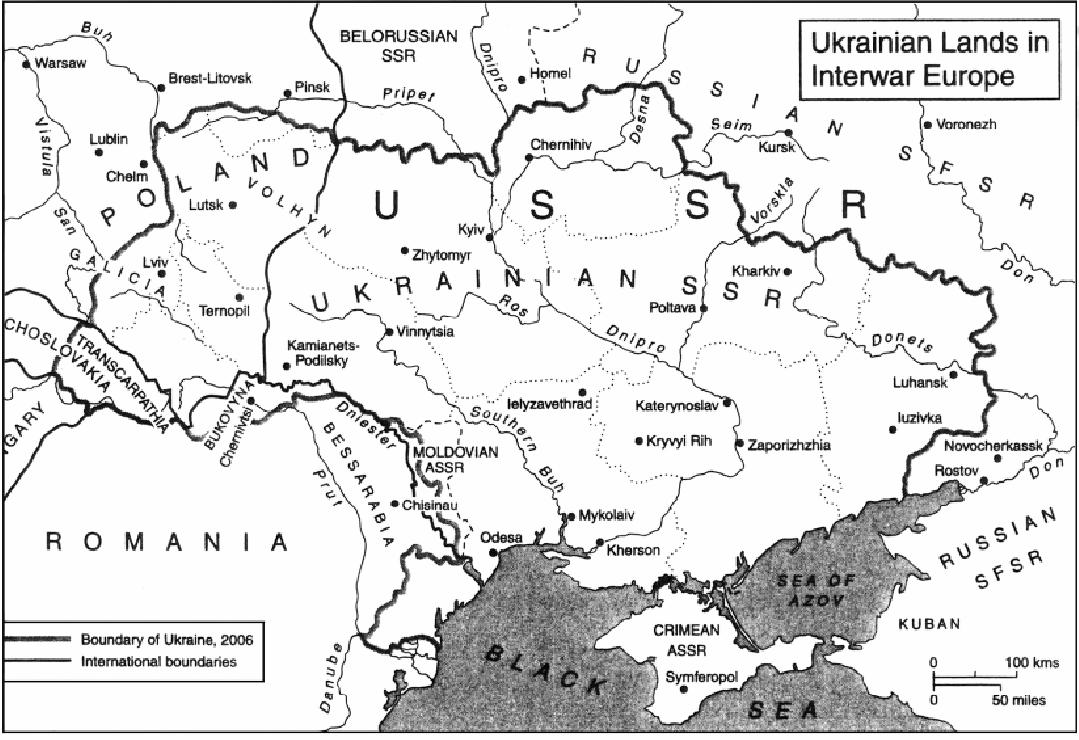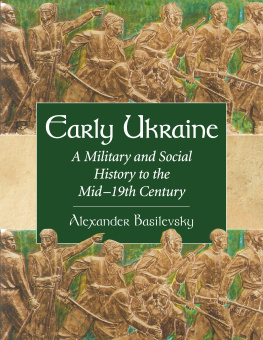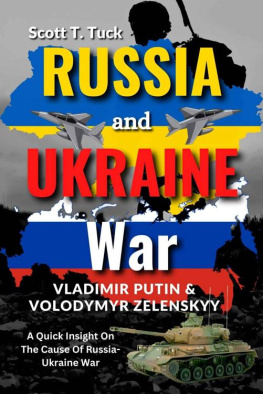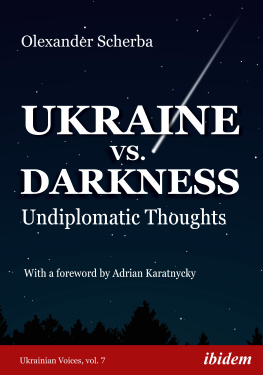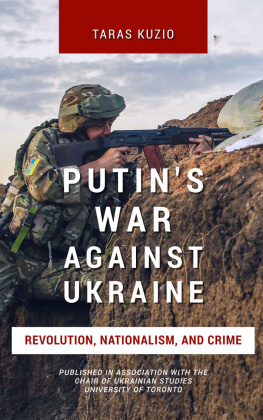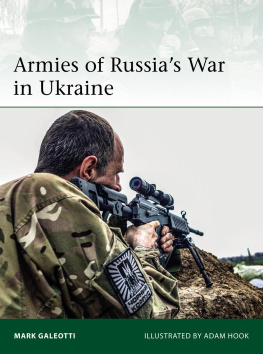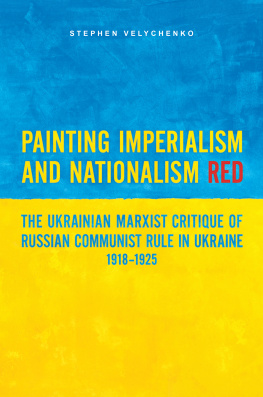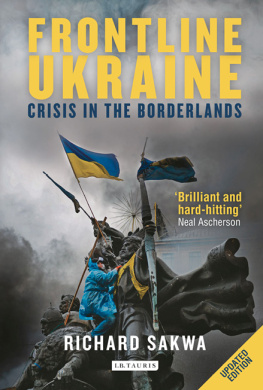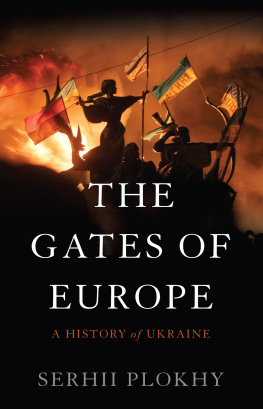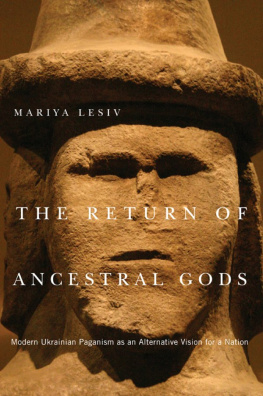Early Ukraine
A Military and Social History to the Mid19th Century
Alexander Basilevsky

McFarland & Company, Inc., Publishers
Jefferson, North Carolina
LIBRARY OF CONGRESS CATALOGUING DATA ARE AVAILABLE
BRITISH LIBRARY CATALOGUING DATA ARE AVAILABLE
e-ISBN: 978-1-4766-2022-0
2016 Alexander Basilevsky. All rights reserved
No part of this book may be reproduced or transmitted in any form or by any means, electronic or mechanical, including photocopying or recording, or by any information storage and retrieval system, without permission in writing from the publisher.
Front cover image of Taras Shevchenkos statue, Winnipeg (photograph by the author)
McFarland & Company, Inc., Publishers
Box 611, Jefferson, North Carolina 28640
www.mcfarlandpub.com
To the memory of my father,
Mykola, Captain of the famed Zaporozhian Cavalry Division
of the Ukrainian National Republic
Acknowledgments
Special thanks to Julie Beaver, the Department Assistant of the Department of Mathematics and Statistics at the University of Winnipeg, for the patient and efficient electronic preparation and typing of many drafts of the manuscript which made this book possible. All remaining errors are mine.
Preface
This is a history of Ukraine, of the people who inhabit todays north-central region where Ukraine was born, with its distinct language, culture, and social traditions. Here was the medieval civilization of Rus with its capital at Kyiv, which stretched from the great Pripet Marsh down along the Dnipro (Dnieper) River and its tributaries, ending at the great cataracts or porohy, the threshold between settled Slavic communities and those of the nomads that roamed the great east European steppe. Referred to redundantly at times as Dnieper Ukraine, here in the great metropolis of Kyiv was the cradle of modern east European civilization, as great princes of Kyiv built the city-states of todays Russia, Belarus, and what now form the western provinces of Ukraine (the medieval principality of Galicia) which include the Carpathian mountains.
These were the branch-plants of the Rurik dynasty from the mercantile republic of Novgorod, which established the great trade route from Scandinavia to Constantinople, the capital of the Eastern Roman Empire. In the wake of the devastating Mongol invasion of 1240, the krainathe frontier between the Slavic Christian lands and the steppe of the Muslim Mongol Hordeemerged as the home of the Cossacks, the creators of a unique culture that became Ukraine. The Cossack movement of Ukraine was the second stage in the history of Kyiv-Rus, as following its destruction armed frontiersmen began to venture into the steppe to reap a rich harvest from hunting and gathering. The freedom of the steppe brought a democratic and individualistic lifestyle with an anti-feudal, anti-state ideology defended by the lance and sabre.
Today Ukraine consists of disparate regions, each with its own traditional language, religion, and culture, but it is the Cossack regions that gave birth to Ukrainian culture, and language. By 1900, however, Ukrainian national identity had spread to neighboring territories, particularly to Galicia in the Austro-Hungarian Empire, where many educated Rusins (Ruthenians)
A myth demonstrating an even greater disregard for the historical record lies in Russian historiography, which beginning in the 19th century went hand-in-hand with Russian imperialistic ideology. Projecting 19th century circumstances onto history, Ukraine (Little Russia) and Belarus became simply parts of Russia. Ignoring the fact that Russia was born only in 1722, Russian historians have consistently referred to the medieval civilization that emerged in todays Ukrainian lands as Kievan Russia. Again, there could not have been a split in a common entity which never existed. In actual fact the exact opposite was the casea continual state of warfare between the city states of Kyiv-Rus and Novgorod on the one hand, and those of the north-east on the other.
The blatant perversion of history persisted into Soviet times and targeted other societies as well. Following Stalins expulsion of the entire Tatar population from the Crimean Peninsula in 1944, it was claimed in a major two-volume Moscow publication that the Crimea has been Russian land from ancient times. Therefore, there was no conquest of a sovereign land but a reunification and a reestablishment of the rights of the Russian people to their own land. Such untruths continue to fuel Russian nationalist propaganda to this day.
This book begins in the distant past and ends with the enslavement of the Ukrainian people in the second half of the 18th and first half of the 19th century. As revealed by recent archaeology, the great steppe of Ukraine and southern Russia was the birthplace of the patriarchal warlike Aryan tribes, which conquered Europe and much of Asia and in the process introduced the bronze and the iron ages. These nomads have had a lasting effect on the Ukrainian people and their history. We also consider the early Slavs, their manufacturing emporia and the fur trade, which gave rise to the future city-states. Often ignored by historians, the Slavs were the last barbarian tribes to invade the Roman Empire following the first religious wars between the Arian Christian Goths and Vandals, and the Roman Orthodox Church.
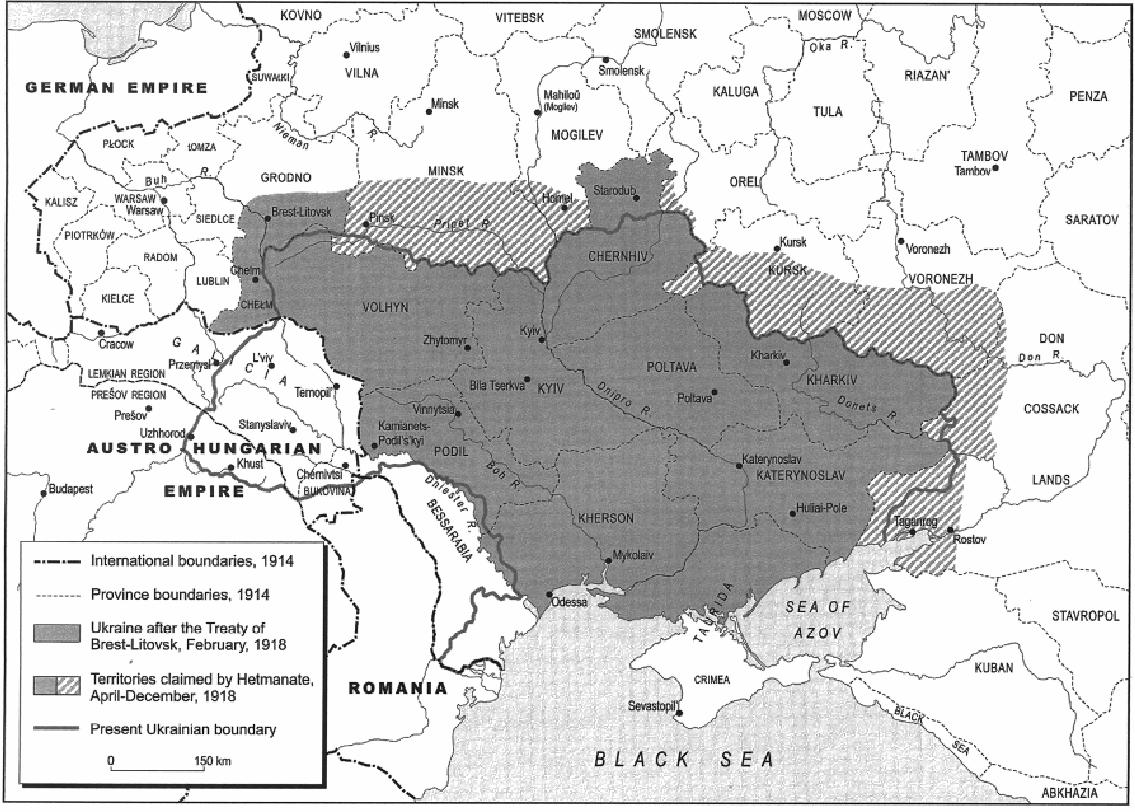
Ukraine following the declaration of independence, 1918.
Next the text traces the beginning and development of the Kyiv-Rus civilization and its neighboring Greek Orthodox city-states. The period also marks the beginning of the Papal Crusades and the continuing religious warfare, which had a profound impact on European history. Destroyed by the Mongols, Rus fell to the pagan Lithuanian tribal princes while Galicia was absorbed by the Polish Roman Catholic monarchy, and by the beginning of the 15th century all vestiges of Kyiv-Rus had disappeared, left with a scattered population in the forests, wetlands, and the steppe. Following the defeat of the Germanic Crusader Knights in the great battle of Tannenberg in 1410, the Roman Catholic kingdom of Poland-Lithuania became the dominant power in eastern and central Europe.
Now begins the second period or stage in the history of what had been Kyiv-Rus, as in the 15th century armed frontiersmen start to venture into the steppe in search of the rich harvest that could be obtained from hunting and gathering. The steppe was a dangerous place frequented by marauding Tatar-Mongols in search of booty, and soon blockhouses and forts began to spring up manned by determined armed men known as Cossacks. In Chapter 10 we perceive the early Cossack democratic individualistic lifestyle and anti-state ideology that marked a parting of the ways with traditions of princely Kyiv-Rus and its great noble families, which began to adopt Roman Catholicism to become Polish noblemen. Another characteristic feature of Cossack society was the freedom enjoyed by women and a veneration of children which can be seen in the image of Did Moroz or Old Man Frost, who traveled in his sled during the dark days of Christmas to deliver presents to children. Cossacks serving in the Baltic region most certainly carried on the practice incognito, giving rise to the fable of Santa Claus.
